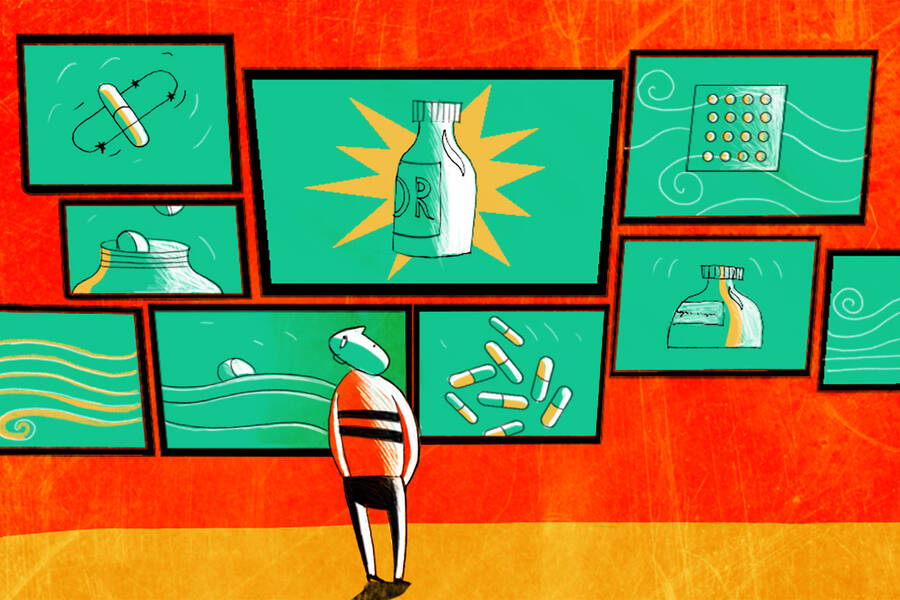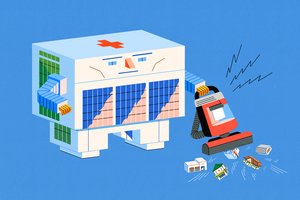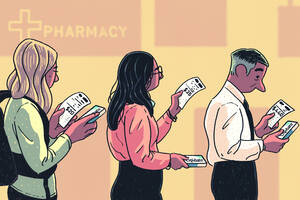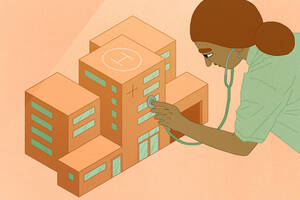Healthcare Oct 3, 2017
Prescription Drug Coupons Actually Increase Healthcare Spending by Billions
Consumers may love them, but coupons steer people away from inexpensive generics.
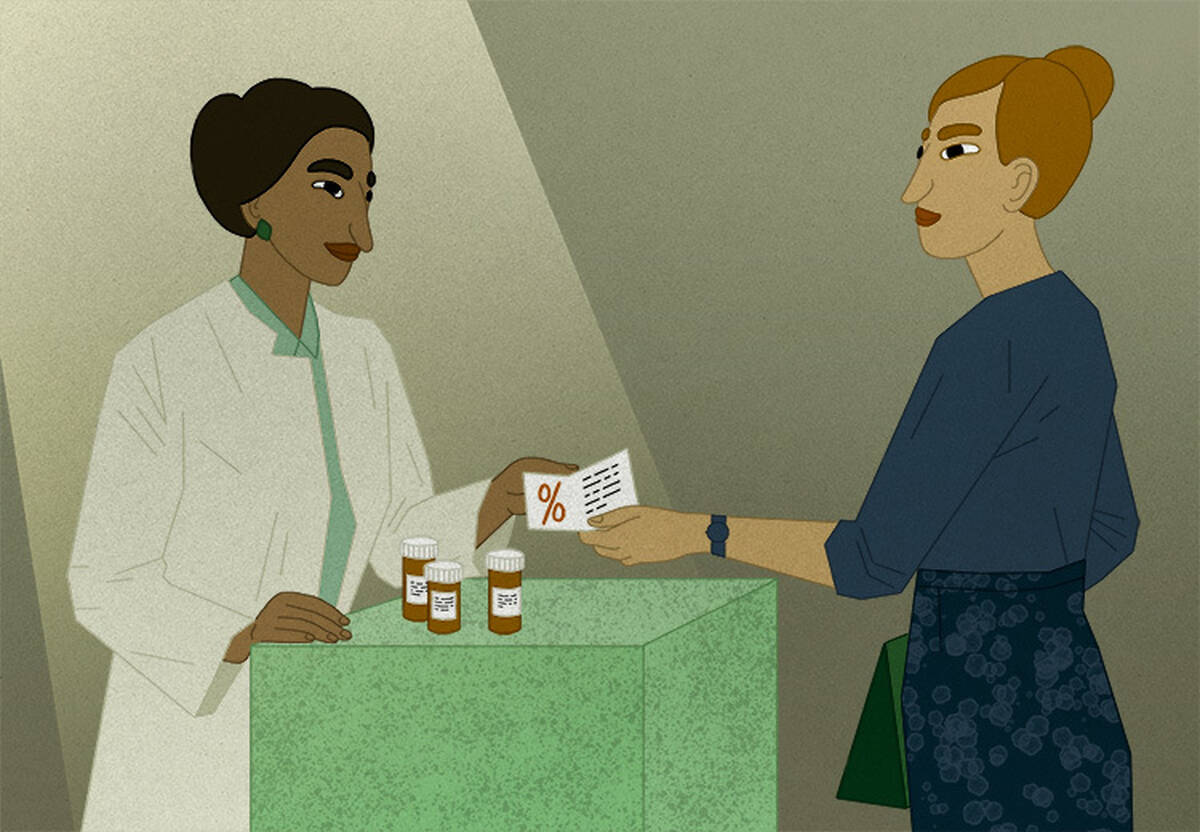
Lisa Röper
Last year, the pharmaceutical company Mylan faced public outcry when it raised the price of the lifesaving allergy medication EpiPen to $609 a box.
In response to the furor, Mylan pointed out it offers copay coupons that can reduce consumers’ out-of-pocket cost to less than $100.
Copay coupon cards for prescription drugs have become increasingly common since they were introduced in the mid-2000s. They can be found online, in popular magazines, and even in doctors’ offices. While the cards might seem benign—what consumer doesn’t love a bargain?—their ultimate impact on the cost of healthcare is anything but, according to new research from Christopher Ody, a research assistant professor of strategy at the Kellogg School.
Ody and his coauthors, Leemore Dafny of Harvard Business School and Matt Schmitt of the UCLA Anderson School of Business, studied the effect of copay coupons on brand-name drugs for which a generic equivalent was available.
Their results show that the coupons are a boon to drug companies but come at a cost for insurers, who may pass that cost along to consumers by way of pricier premiums.
The researchers estimate that for brand-name drugs facing generic competition, these coupons boost retail sales by 60 percent or more. And they increase spending by anywhere from $30 million to $120 million per drug during the five years studied. That translates to as much as a $2.7 billion increase in spending for the 23 drugs they studied over five years.
“You think, ‘how much can this matter?’” Ody says. “It ends up mattering a lot.”
Copay Coupons: “A Money Tree”
Brand-name drugs cost about five times more than their generic equivalents, according to the Food and Drug Administration. That is why insurance companies steer customers toward generics by offering lower copays for generic drugs.
Manufacturers of brand-name drugs have attempted to overcome this hurdle with copay coupons. With a coupon, a brand-name drug might cost you the same amount as the generic version. The trouble is that even though it is cheaper for you, the brand-name drug is not any cheaper for your insurance company.
“From a policy perspective, we were quite concerned by the existence of coupons, and we wanted to figure out how big of an effect they were likely having.”
As a general rule, companies risk losing customers when they increase prices. But with copay coupons, drug manufacturers have created a new playbook: “If you raise the price by a dollar, and the price to consumers goes up by 20 cents, and you can give the consumer 20 cents,” you’ve essentially discovered “a money tree,” Ody says—a way to raise prices infinitely without reducing demand, and letting insurance companies foot the extra bill.
When he started studying copay coupons, Ody was surprised they were allowed, given how much they seem to distort the health care market.
“From a policy perspective, we were quite concerned by the existence of coupons, and we wanted to figure out how big of an effect they were likely having,” he explains.
Impact on Generic Competition
Studying the impact of copay coupons proved to be surprisingly tricky. Neither insurers nor pharmacies track whether consumers cover their copay costs with coupons. Adding to the complexity, drug companies usually begin offering coupons when something else is changing about their product—for instance, when they know a generic will soon appear on the market.
But the research team found a workaround.
They started with a list of 85 drugs that faced generic competition for the first time between 2007 and 2010. Using a popular coupon website, they identified 23 of those drugs that had a discount card available.
The team also took advantage of the fact that copay coupon cards are banned in Massachusetts (currently the only state to ban them) but allowed in neighboring New Hampshire. “That let us compare utilization of drugs with the coupons and without the coupons in Massachusetts versus New Hampshire,” Ody says.
The results were striking.
Coupons put a significant dent in the percentage of prescriptions that were filled with a generic, rather than brand name, drug. Typically, a branded drug declines to roughly five percent of prescriptions after a few years of generic competition. Coupons staunch this bleeding, increasing branded-drug market shares by an additional 3.4 percent of prescriptions.
Tellingly, the coupons do appear to allow drug prices to grow more quickly than they would otherwise. Branded drugs with coupons experience growth of 12–13 percent per year, compared with 7–8 percent per year for branded drugs without coupons.
And the impact of these coupons on the market is growing. In 2007, drugs with coupons accounted for 26 percent of all brand-name drugs sold in retail pharmacies. By 2010, that figure had jumped to 54 percent.
Because of the price differential between brand-name drugs and generics, a relatively small increase in the percent of prescriptions that are filled with brand-name drugs has huge consequences for insurers. The additional 3.4 percent of prescriptions filled with brand-name drugs accounts for “a huge share of the cost, because the branded drugs are so expensive,” Ody says. “The numbers are big and small at the same time.”
Should Copay Coupons Be Banned?
Today, Massachusetts bans coupon cards for drugs with a generic equivalent, but allows them for drugs with no generic competitor. (California and New Jersey are also considering a ban on copay coupons.)
Ody says there is reason to believe the restrictions have been successful: “The ban in Massachusetts definitely seems to have led to more use of generics, and we think that saved a substantial amount of money.”
But he is not sure whether such laws are the ideal approach. Politically, it is not “a super easy sell to tell people, ‘We’re not going to let you use this thing which seems like it should make things cheaper for you, because actually it’s more complicated.’”
Preferably, Ody says, “we’d leave this for private insurers to figure out,” eliminating the need for governmental involvement. It might be possible for insurers to write contracts with drug manufacturers that prohibit the use of coupons. After all, “If insurers don’t like these things, no one is forcing them to cover these drugs.”
In future research, Ody hopes to gain a better understanding of whether and how coupons impact spending on drugs with no generic alternative.
In those cases, “potentially both the costs and benefits of allowing these coupons are larger,” Ody says. “Having a better answer for those drugs is important.”
